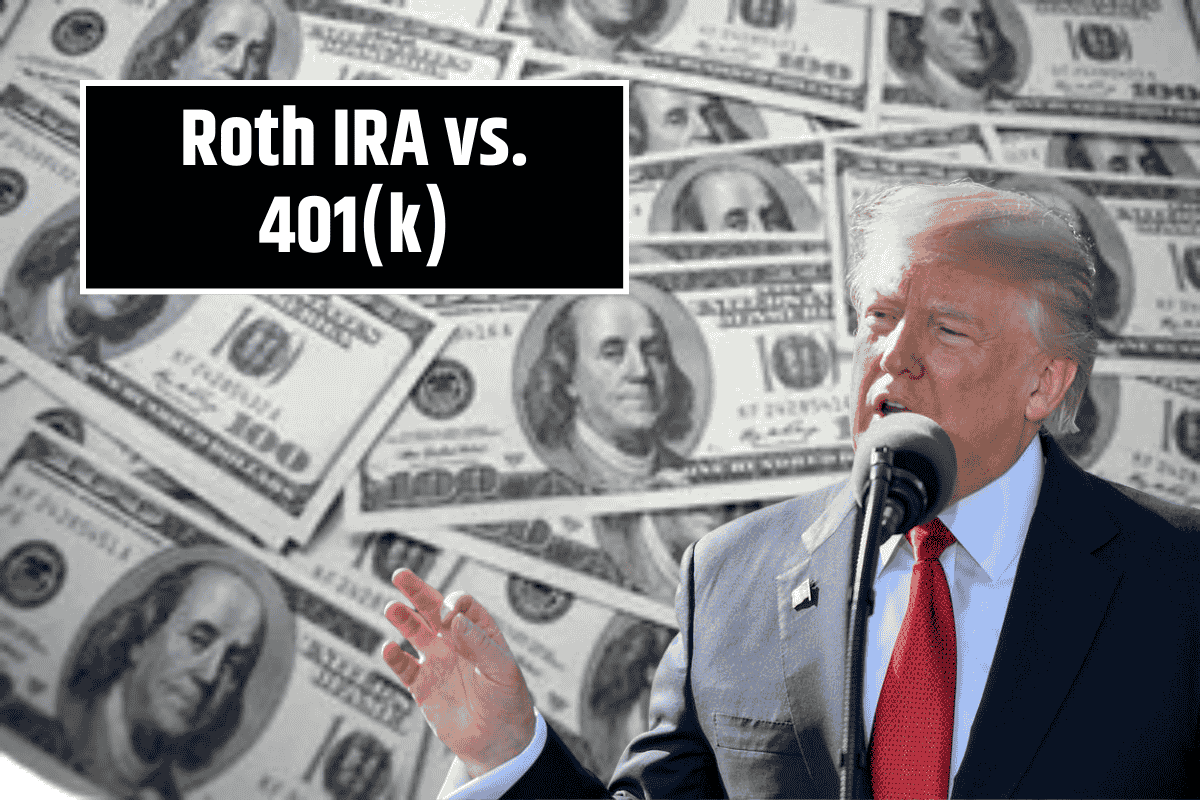As retirement approaches, many of us are thinking more seriously about how to prepare financially. Starting early is key, and investing through tax-advantaged retirement accounts is one of the most effective ways to grow wealth for your future.
The most common option is the 401(k), but the Roth IRA offers distinct advantages. So, should you choose a Roth IRA over a 401(k)? Let’s break it down.
Why the Roth IRA’s Tax Break is Hard to Beat
A Roth IRA allows you to contribute after-tax money, and in return, you get tax-free withdrawals in retirement. That means all the growth and gains you earn are not taxed when you take them out.
For instance, if you contribute $7,000 a year to your Roth IRA and average 10% annual returns over 20 years, you’d end up with nearly $400,700—with only $140,000 of your own money contributed.
If you had invested in a regular brokerage account, you’d owe taxes on the $260,700 in capital gains. With the Roth IRA, however, that $400,700 is tax-free when withdrawn.
Roth IRA Flexibility vs. 401(k) Limitations
While the Roth IRA offers flexibility, the 401(k) can feel restrictive. In a typical 401(k), you’re usually limited to a short menu of mutual funds or ETFs selected by your employer’s plan administrator. This may not fit every investor’s style.
On the other hand, a Roth IRA lets you invest in any stock, ETF, or mutual fund—just like a regular brokerage account. This gives you the freedom to choose investments that suit your goals, including the ability to invest in single stocks.
Additionally, Roth IRAs allow you to withdraw your contributions (not earnings) at any time without penalty, which can be helpful in situations like buying your first home or paying for education expenses. While taking early withdrawals is not ideal, the option does add a layer of flexibility.
Where the 401(k) Shines
The 401(k) has its strengths as well. For many, one of the biggest advantages is how passive it is. Once you set up your contribution amount and choose your investments, everything happens automatically with each paycheck.
This ease of saving makes it relatively effortless compared to a Roth IRA, where you may need to make active investment decisions.
Another major advantage of a 401(k) is its higher contribution limits. In 2025, the annual contribution limit for a 401(k) is $23,500, with an additional catch-up contribution option for those 50 and older, allowing contributions to reach $31,000 (or up to $34,750 for those 60-63).
This allows you to save a significantly larger portion of your income in a tax-deferred account.
The Ideal Strategy: Use Both a 401(k) and Roth IRA
The best approach isn’t choosing one over the other; it’s using both. Here’s the ideal strategy:
- Max out your 401(k) employer match first. If your employer matches 5% of your wages, contribute at least 5%. This is free money that you shouldn’t pass up.
- Focus on your Roth IRA after reaching the employer match. Contribute up to the maximum allowable amount ($7,000, or $8,000 if you’re 50+). This lets you enjoy tax-free growth for the long term.
- If you still have room to contribute after maxing out the Roth IRA, return to your 401(k) to boost your contributions and take advantage of higher limits.
This strategy combines the best of both worlds: the immediate tax break from a 401(k) and future tax-free withdrawals from a Roth IRA.
Additional Social Security Benefits You Might Be Overlooking
For many retirees, Social Security is a significant source of income. However, there are little-known Social Security strategies that could help increase your retirement benefits by up to $23,760. By optimizing your Social Security claiming strategy, you could boost your total retirement income.
In conclusion, while both the 401(k) and Roth IRA offer valuable benefits, the best approach is to take full advantage of both. Use the 401(k) to benefit from employer matches and higher contribution limits, and then contribute to a Roth IRA for the long-term benefit of tax-free withdrawals.
By using both types of accounts, you’ll be well on your way to a more financially secure retirement.
